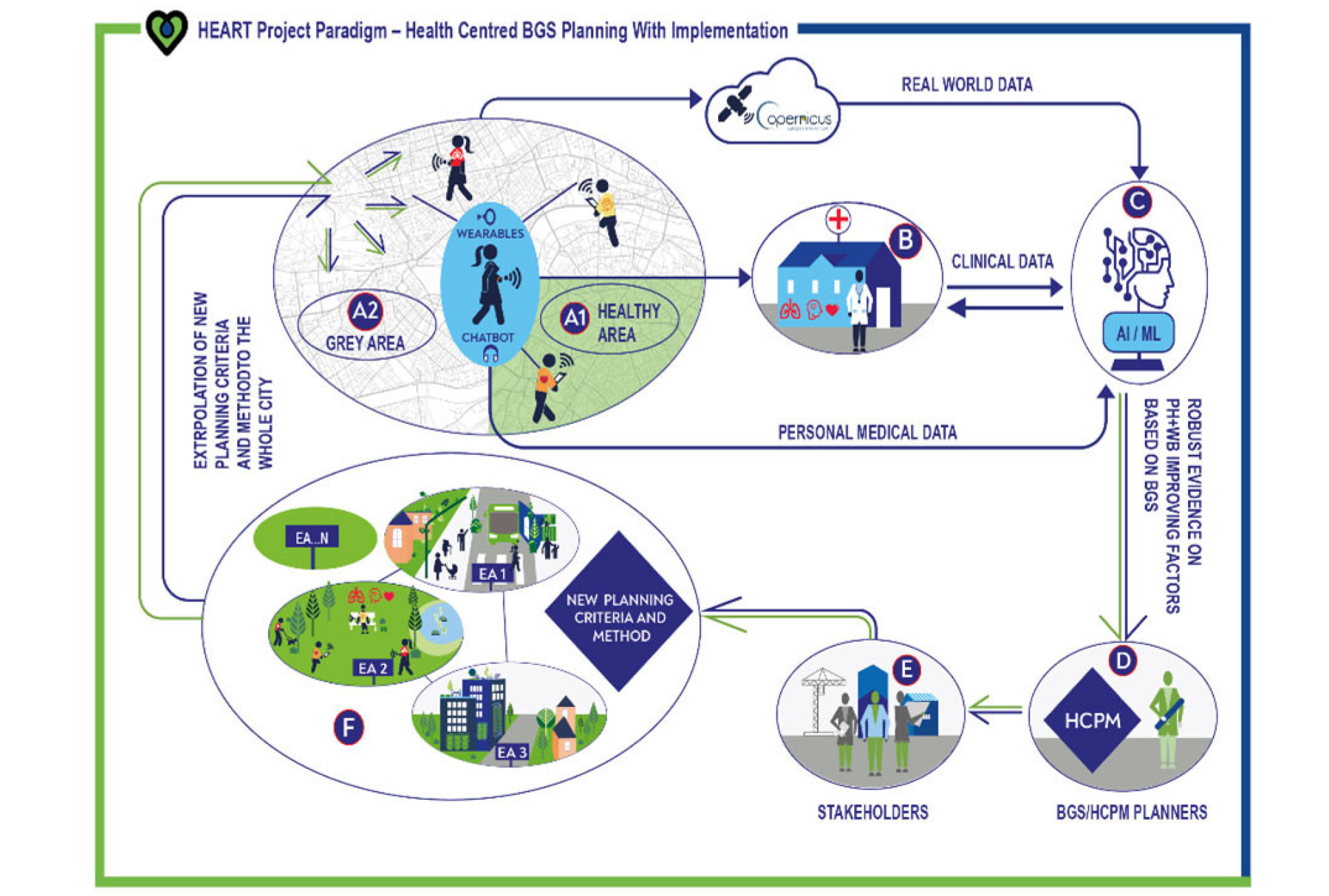HEART project
HEART project – Health and Well-being in Urban Environment
The HEART project, funded by European Union’s Horizon 2020 Research and Innovation Program and coordinated byNational Technical University of Athens (NTUA) kicked-off in late March 2021, with 19 partners from academia and different fields of expertise: health, urban planning, social studies, technological and innovation-oriented, along with cities/regions and their utility companies (water, green infrastructure, environment).
The acronym HEART comes from the very philosophy of this urban-health and well-being-inspired project’s title: HEAlthier cities Through blue-green Regenerative Technologies.
European and international cities face crucial global geopolitical, economic, environmental, and other changes. All these intensify threats to and inequalities in citizens’ health due to several factors such as living conditions/degraded environment, health-related behavior, education, occupation, and income. In the HEART project, we focus our research efforts on a specific range of diseases, such as metabolic (obesity, diabetes) / mental disorders (including stress, anxiety, depression), cardiovascular-related diseases (examples are hypertension or arrhythmia), and respiratory diseases (asthma, and allergies).
The scheme of the project presents the major blocks of partners and the related groups of activities.

A: Urban environments including healthy (BGS-enhanced) areas and grey areas.
B: Medical/Clinical Centres: responsible fo validation of impacts of HEART proposed solutions in clinical settings.
C: The data processing, where all data will be gathered: clinical data (B), personal medical data (wearables) and real-world data, i.e. satellite, EU services e.g., Copernicus, etc.) urban & social data, environmental.
D: Urban Planners using the robust scientific evidence (C) to apply our innovative HCPM.
E: Main Stakeholders of HEART: health institutes and authorities, cities and regional authorities, urban planners, experts on CC and environmental medicine researchers.
F: New Health-Centred Planning Methods and Guidelines for pervasive implementation/ in thematic (“extrapolation”) areas (EAs): 1-healthy streets & corridors, 2-thematic(health) parks, 3 -healthy districts and EAN – other areas.
The HEART intertwines the knowledge, experience, and data collected from the selected demo sites/areas in three cities Athens (Attika region, Greece), Belgrade (Serbia), and Aarhus (Midtjylland region, Denmark). The project’s methodology maps all the socio-cultural, health, and well-being issues, which then dealt with by our proven nature-based solutions: natural eco-systems, blue green solution (BGS)/natural components incorporated into the urban fabric that secure high-level health quality.
The Imperial College’s research team is led by Prof. Cedo Maksimovic and consists of the following scientists:
Dr Alexandra Collins, Dr Athanasios Paschalis and Dr Stanislava Boskovic


